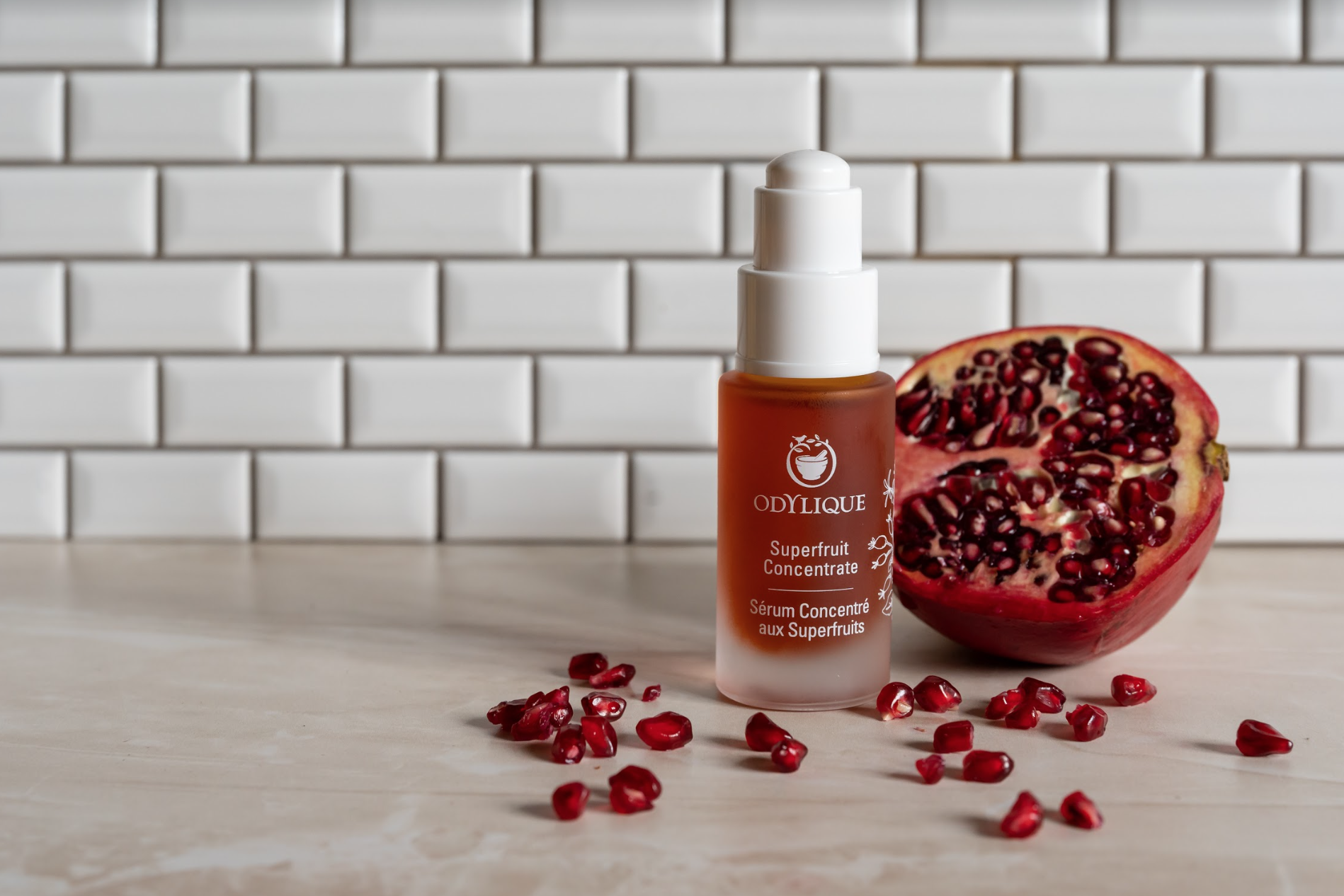You may not have heard of cradle cap in adults, if at all! If you're a parent, this unpleasant skin condition may have already reared its head, causing your baby's scalp to go from oh-so-perfect to greasy and flaky.
But despite its name, cradle cap is not limited to babies - it is possible to get cradle cap in adults, only it's commonly referred to as dandruff or seborrhoea / seborrheic dermatitis. This umbrella term loosely covers a range of skin conditions including psoriasis, cradle cap, dandruff and some kinds of eczema.
Seborrhoea describes when our skin produces excessive sebum, so dead surface skin is not shed as normal but sticks together and accumulates on the skin's surface, forming thick scaly patches, often becoming red and sometimes itchy. Similar in appearance to psoriasis, it is likewise not contagious and relatively easy to deal with once you know the cause.
Although most commonly found on the scalp, seborrhoea can appear in other areas of the body rich in sebaceous glands, such as the chest and back.
Certain people are genetically susceptible to it, but seborrhoea can disappear and reappear at different stages in life..but you don’t have to leave it to chance!
Although not painful or serious, it's not very pretty, but you can manage seborrhoea and keep it under control...
What Causes Seborrhoea?
According to doctors, the exact cause of seborrhoea isn't actually known. In fact, there is a range of possible culprits:
Fungal Infection
A fungal infection could be the root of scalp seborrhoea, particularly if you suffer from seborrhoea on your scalp (where the condition is usually referred to as dandruff).
One of the simplest solutions to tackle scalp seborrhoea directly is with an anti-fungal, tea tree shampoo. Tea tree has demonstrated its anti-fungal properties in a range of studies, including one revealing it inhibited 'Malassezia furfur' - the fungi directly associated with seborrheic dermatitis/dandruff[1].
Another study demonstrated coconut oil's antimicrobial properties [2] (an important ingredient used in our organic shampoo range). For additional relief, why not try an overnight scalp mask containing coconut oil, like Ultra Rich Balm or (providing your hair is not white or platinum blonde) Calendula Balm, with the added benefit of antifungal calendula petals?
Tackling a fungal problem topically should do the trick, but if the issue persists, it’s important to get expert advice.
Hormonal Imbalance
Hormonal imbalance can contribute to a lot of different issues, particularly when it comes to the sebaceous glands.
It's understood that the sebaceous glands can go into overdrive when there is a surge in hormones, like during puberty when people commonly get spots.
A similar story rings true for seborrhoea, where it can make an appearance when hormones are out of kilter.
Tackling hormones can be a little more complicated, with a wide range of issues potentially influencing them. The best way to know if you've got a hormone imbalance in the first place is to get a blood test by your doctor.
However, there are steps you can take to help encourage balance in your body whatever the test results read!
One of the simplest things you can do is to minimize your contact with synthetic, hormone-disrupting chemicals.
Many chemicals found in things like household cleaning products and skincare have been pinpointed as endocrine disruptors (meaning, they disrupt hormones).
Instead, you can dramatically decrease your exposure levels by buying certified organic products. This will cut out the majority of toxins found in everyday products such synthetic colors, fragrances and pesticides and fungicides left over from farming.
Once you’ve made the switch, it’s important to give your body time to readjust and watch what happens!
How To Get Rid of Seborrhoea
Lifestyle
Taking a holistic approach to health won’t just help the problem at hand, but will impact numerous areas of your life in a positive way.
As we mentioned previously, avoiding synthetic chemicals as much as you can could help tremendously. As well has disruptions within your body, the direct effect of slathering synthetic chemicals onto the skin can irritate, prolong problems and suffocate the skin. Common synthetic ingredients like mineral oil create a film over the skin, trapping sweat and bacteria and could be solely responsible for any rash that appears. Many topically applied ingredients also absorb into our bodies, which is why it’s imperative to choose ingredients that will improve the body’s function, rather than fight against it.
Organic skincare is a healthier alternative which works in harmony with your body and, at least in the case of Odylique skincare, contain ingredients that actively promote skin repair.
Many people find that common ingredients in conventional shampoos, like silicone and sulfates, irritate their scalp and simply switching to a natural alternative can give rapid relief.
For an oily scalp, we recommend our Tea Tree Oil Shampoo, where the anti-fungal properties of the tea tree will fight against the bacteria which feeds on the oil and the nettle extract may help calm inflammation.
To treat seborrhoea on the body, a study found that honey, olive oil, and beeswax inhibit the growth of a type of bacteria that’s been linked to multiple skin conditions[3]. If you'd like to try it out for yourself, our Honey & Oatmeal Cleansing Bar contains honey, olive and coconut oil, all of which are useful in the treatment of seborrhoea. With the added benefit of exfoliation with soothing oatmeal - which all make for a luxurious bath time!
Moisturizing is key, whatever your skin type.
It might seem counter-intuitive if you've got oily skin, but you must remember to moisturize! Our skin can overcompensate for underlying dryness by producing excess sebum, making it appear oily. So don’t avoid moisturizing.
Our Repair Lotion is a good option for a whole body moisturizer. With calming ingredients like chamomile; it soothes very sensitive skin. One of the main ingredients, Aloe Vera Juice, has properties deemed effective in treating seborrheic dermatitis specifically, too.[4]
Designed to be used anywhere on the body, it makes a valuable go-to, even for seborrhoea of the scalp. It can be applied as an overnight treatment where it will penetrate quickly into the skin and hopefully provide you relief...just remember to wash it out the next morning!

Spend time outdoors
Part of a healthy lifestyle includes getting outside. Many people find that seasonal changes project what they can expect their skin to look like, with symptoms worsening in the winter.
When it comes to sunlight, it’s important to get enough.
A study was performed on a range of skin conditions, including seborrheic dermatitis[5]. The results were very positive, so when you can, make sure you're spending some time outdoors, it’s simple, fast and free!
Photodynamic therapy, a treatment where UVA and UVB lasers are used to inhibit fungal growth and reduce inflammation is often recommended for those with seborrhoea. However, getting appropriate time in the sun will offer you the same benefits.
Getting enough sunshine isn't always easy, especially for those who live in a cold climate. But all is not lost; research has found that vitamin D supplementation benefitted sufferers of seborrhoea, who have been found to be deficient in vitamin D as a whole.[6]
But please consider that just as the sun can serve your skin, it can also be harmful. Make sure you're practicing safe sun exposure, which you can find out more about here.
Diet
Eating a healthier diet is another great way to tackle a skin issue. Positive changes in diet can help your body balance hormones, detoxify from chemical residues and allow your skin to heal more efficiently. This means: get your fill of fruits, veggies and stay hydrated each day!
Eating foods high in carotenes (pro-vitamin A) and vitamin C such as brightly coloured fruits, tomatoes, carrots and peppers can have a positive impact on skin health, as can taking a high antioxidant nutritional supplement. Opt for one containing natural beta carotene, vitamin C or pycnogenol or a specific formula for skin health like Colladeen Derma Plus with antioxidant plant anthocyanidins and vitamin C.
A combination of steps should help you see improvement of your condition, but if you'd like any more advice on seborrhoea / cradle cap / dandruff, please do email us – info@odylique.com, add your question as a comment below, or call 06175008271 – we're here to help!
References:
[1] P Nenoff, U F Haustein, W Brandt, Antifungal activity of the essential oil of Melaleuca alternifolia (tea tree oil) against pathogenic fungi in vitro.Skin Pharmacol. 1996;9(6):388-94. PMID: 9055360
[2] D O Ogbolu, A A Oni, O A Daini, A P Oloko, In vitro antimicrobial properties of coconut oil on Candida species in Ibadan, Nigeria., J Med Food. 2007 Jun;10(2):384-7. PMID: 17651080
[3] H X Wang, T B Ng, An anti-fungal peptide from the coconut. Peptides. 2005 Dec;26(12):2392-6. PMID: 16308082
[4] Federica Dall'oglio, Aurora Tedeschi, Carmelinda M Fusto, Francesco Lacarrubba, Franco Dinotta, Giuseppe Micali, A novel cosmetic antifungal/anti-inflammatory topical gel for the treatment of mild to moderate seborrheic dermatitis of the face: a open-label trial utilizing clinical evaluation and erythemadirected digital photography. G Ital Dermatol Venereol. 2017 Jan 24. Epub 2017 Jan 24. PMID: 28121079
[5] M Berg, Epidemiological studies of the influence of sunlight on the skin.Photodermatol. 1989 Apr;6(2):80-4. PMID: 2748434
[6] J. Dimitrova, STUDY OF THE LEVEL OF 25-HYDROXYVITAMIN D IN PATIENTS WITH SEBORRHEIC DERMATITIS, Scripta Scientifica Medica, 2013, vol. 45 (1), pp. 75-78. http://press.mu-varna.bg/ojs/index.php/ssm/articl...Designed by Freepik

